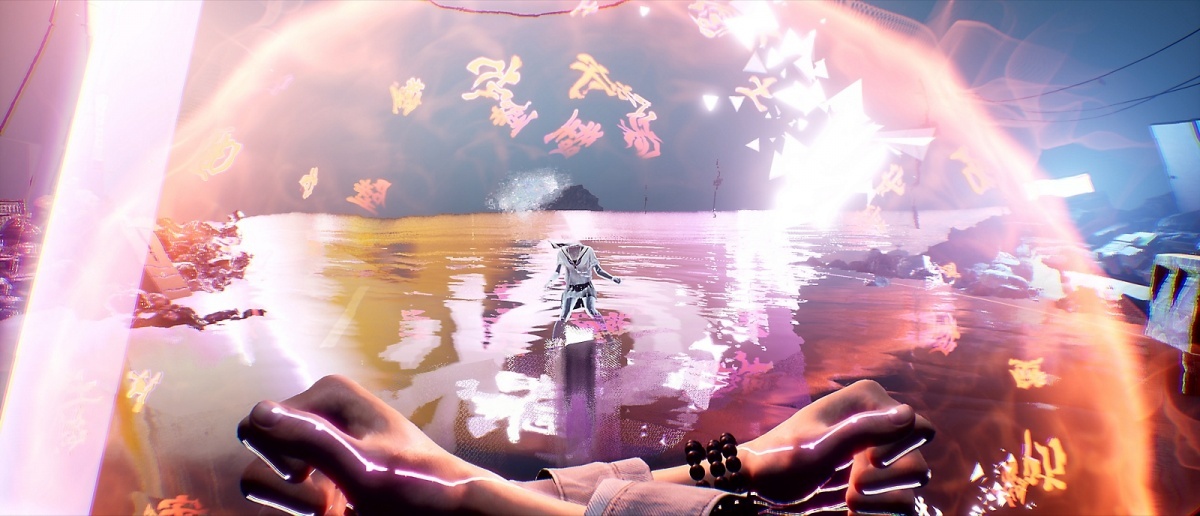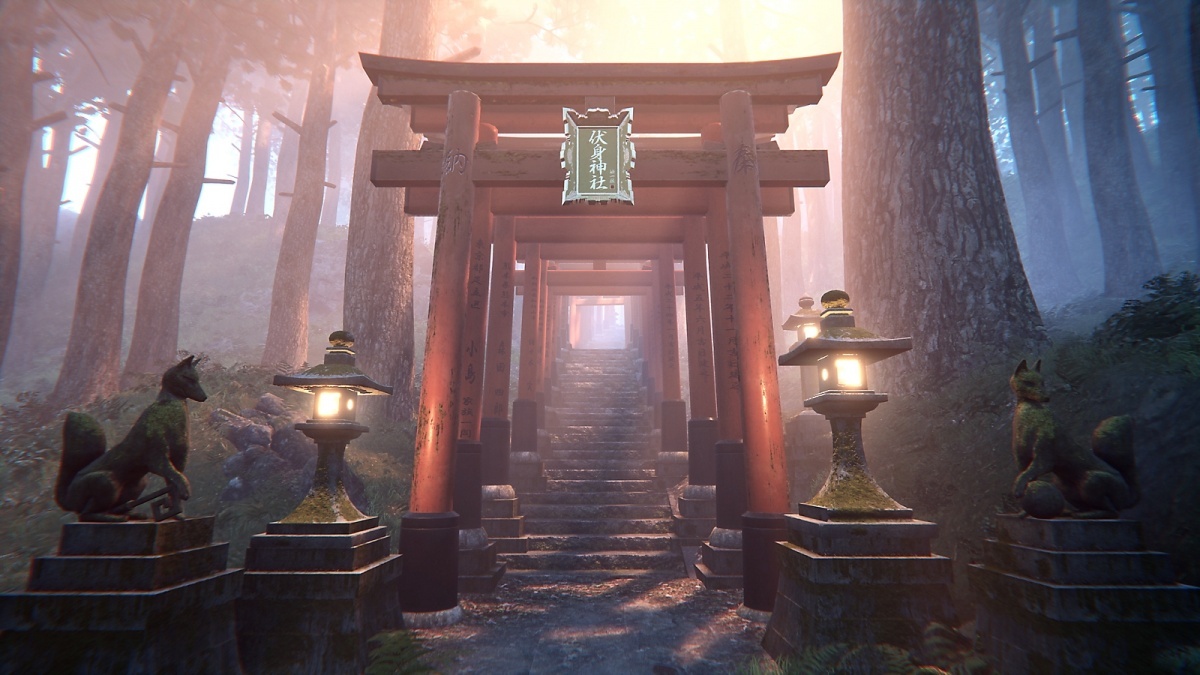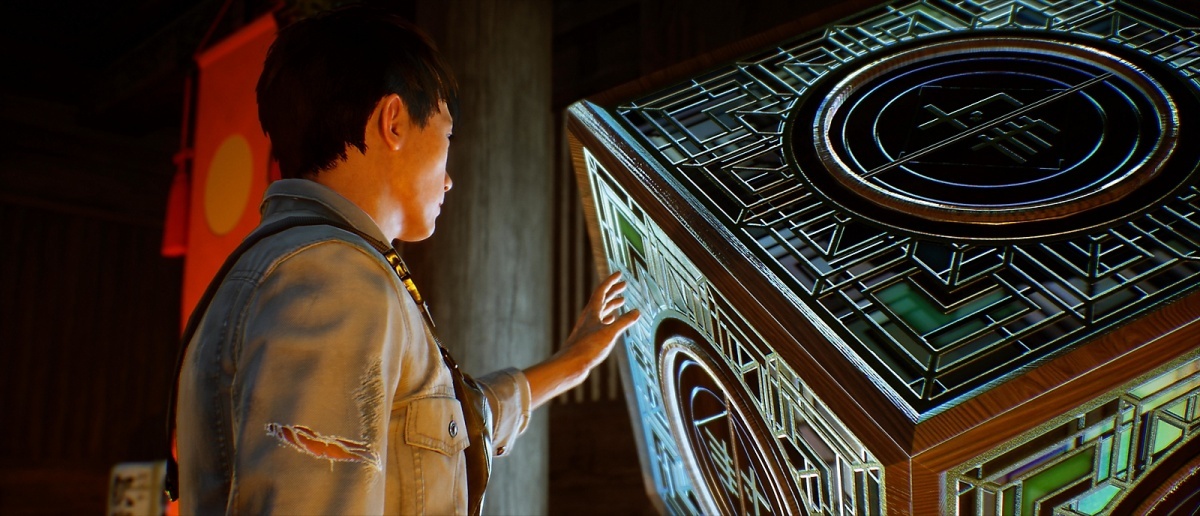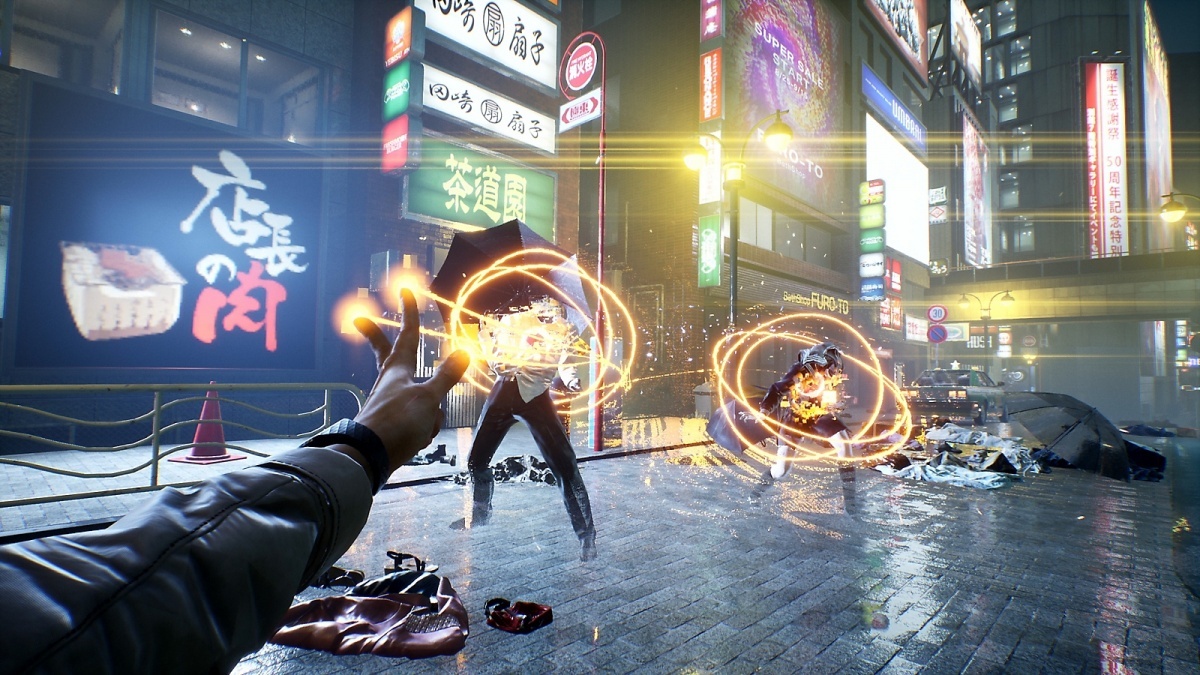Ghostwire: Tokyo (PlayStation 5) Review
By Renan Fontes  21.03.2022
21.03.2022

Best known for The Evil Within 1 and 2, Tango Gameworks' third title, Ghostwire: Tokyo serves as something of a departure for the Japan-based dev team. What originally began life as The Evil Within 3 radically morphed into a first-person action-adventure that utilizes horror more as an aesthetic than to outright scare audiences. This title is due to be released for PC and PlayStation 5 on 25th March 2022. Let's have a look at what it has to offer!
To start with, it's important to point out that Ghostwire: Tokyo has an identity independent of The Evil Within. Fans looking for a traditional survival-horror experience will more than likely walk away disappointed, but Ghostwire: Tokyo does offer a compelling world for audiences who simply want to explore a desolately creepy interpretation of real-life Tokyo or shoot spirits with their fingertips.
The title is set in a version of Tokyo where every human being has mysteriously vanished. Raptured out of their clothes mere moments before the story begins, humanity is reduced to an ethereal form where people's disembodied whispers can be heard trailing in the air. The only survivor is protagonist Akito, a young man saved from the brink of death by being possessed by the spirit of another man, KK. Now trapped somewhere between life and death, Akito (with KK's help) stands as Tokyo's sole hope.
The premise alone lends itself to a compelling experience where the normally busy streets of Tokyo are left utterly abandoned for players to explore at their leisure. Alleyways, rooftops, and more than a few buildings are freely explorable. A moody atmosphere puts into perspective how alone Akito is, clothing abandoned by their bodies and periodic rain falling on an empty city. The only living things left to interact with are local animals like dogs and cats. Animals aren't just around for flavour, though. Akito can pet dogs & cats, read their minds, or feed them food to uncover some nearby goodies. Animals also serve as the main side quest givers, sending players all around Tokyo to do their bidding.

Besides animals, Yokai wander the streets ready to attack on sight. Battles are fairly fast paced, with enemy AI often incentivising aggressive gameplay. Rather than using guns like in most first-person titles, Ghostwire: Tokyo's combat makes heavy use of Ethereal Weaving, a fighting style that uses hand gestures to channel elemental energy. Weaving types ostensibly function as different guns would in any other FPS (each fulfilling a specific gameplay niche and taking their own ammo), each one offering a different approach to combat. Wind shoots small energy bullets at targets, Fire unleashes a large shotgun-sequel blast that has a damage radius, and Water launches a wide arc that slashes at enemies.
All three Weaving types use a colour-coded ammo system (green for Wind, red for Fire, blue for Water) that can be replenished through basic gameplay. Ether Crystals drop from breaking objects, defeating enemies, using specific techniques once upgraded, and grabbing their Core. Every enemy has a core within them that becomes exposed once they've taken enough damage. Since enemies can partially heal their bodies, players need to stay persistent with their attacks. It's important not to hesitate and to serve every opportunity a battle presents. That said, it isn't always beneficial to pull a Core. Since the Core Grab locks Akito in place, he's left vulnerable in multi-enemy battles unless players create some distance beforehand. In cases where there are too many enemies to justify a grab, players will need to settle on killing enemies outright (getting less Ether Crystals in exchange for maintaining mobility).
For what it's worth, issues like this can be mitigated through the three Skill Trees. The Abilities tree enhances Akito's navigational and melee skills; the Ethereal Weaving tree buffs his elemental combat; and the Equipment tree focuses on ammunition & gear along with refining what few weapons players have access to. While leveling up increases Akito's max health and rewards some Skill Points, certain paths will be blocked out until Akito has enough Magatama to unlock them. This keeps progression relatively balanced and ensures later upgrades are doled out at a respectable pace.
Alongside Elemental Weaving, Akito does gain access to a few weapons while having a few tricks up his own sleeve. Players can use a melee attack to strike enemies at close range and can even perform a melee Core Grab once upgraded. Blocking at the exact moment an attack connects also generates more Ether Crystals while heavily reducing damage. A Bow is unlocked relatively early into the story that doubles as a stealth weapon, and different Talismans offer trap-like effects that help counter waves of enemies. In terms of gear, players can equip Food to eat mid-battle (each type has its own upgradable capacity) and Prayer Beads that buff Akito's stats. The RPG elements are admittedly light, but they help round out a fun gameplay system.

As enjoyable as combat can be, Ghostwire: Tokyo thrives when it comes to exploration. The level design is not fully open right away, segmenting different parts of Tokyo through deadly fog. New areas can be unlocked by cleansing Torii Gates, gradually expanding more of the map for exploration. Navigation in the world is mainly split between ground level traversal and exploring the rooftops. With so much verticality at play, secrets can afford to be well hidden and demand actual observational skills to find. At the same time, Tokyo is so well-packed with content that most players will find themselves in a comfortable gameplay loop where they're always finding something. Animals offer side quests, shops sell useful items, pots of money can be found floating around, and Jizo Statues increase Akito's Ethereal Weaving ammo once prayed to.
Along with finding secrets, exploration is mainly driven by a need to fill out the Katashiro, a talisman used to absorb and save Tokyo's lost spirits. Disembodied spirits can be found just about everywhere in the overworld, but only a set amount can be stored at any given time. More Katashiro can be purchased at shops to increase spirit capacity, but there's no point in hoarding them as they can be traded in at payphones for Meika (the in-game currency) and experience points. Transferring a bunch of spirits at once naturally offers a much larger money/XP payout, which does a great job at encouraging players to go out and explore the world.
Akito has several navigational abilities to help him in his adventure, courtesy of KK. Spectral Vision highlights important objects in the general vicinity while also showing exactly where to go next. Its main benefit is to quickly identify nearby spirits, Yokai, and weak points. With so much of Tokyo to explore, Akito makes use of some light parkour to get around. He can climb over most ledges easily, but KK also allows him to grapple onto Tengus flying up into the sky and briefly glide mid-air. This allows players to traverse the Tokyo rooftops at a breakneck pace, running and jumping over buildings in the pursuit of spirits. It's nothing too mechanically in-depth, but the core controls help everything function fluidly and gameplay doesn't push its limits when it comes to platforming in a first-person perspective.

Tokyo is a joy to explore, but the setting is surprisingly tame given the dev team's history with The Evil Within. Which isn't to say Ghostwire: Tokyo doesn't revel in what Tango Gameworks does best, just that it paces itself out with a bit more restraint. Distorted set pieces that play with geography and architecture serve as an assault on the senses, warping otherwise simple level design into something chaotic in a split second. The audio and visuals tear apart at the seams, turning navigation into a puzzle in some instances. Static noise from the DualSense's speakers near enemies and haptic feedback add weight to most actions while building tension. The title isn't exactly scary, but it does nail its tone.
Presentation is another matter, however. While the title runs well enough, performance can be a bit spotty. Rain does have a stylistic quality to it, but it feels choppy. The visuals have an excellent colour palette with great attention to detail but said attention to detail is countered by asset reuse. If nothing else, the actual art direction is quite strong, and gameplay generally doesn't stutter where it counts. Combat and exploration are smooth experiences with rare hiccups. The overall package just seems a bit unpolished, which is a shame as Tango have laid a great foundation. It would be an honest shame if Ghostwire: Tokyo never gets a sequel to iron out its few issues.

Cubed3 Rating
Very Good - Bronze Award

Tango Gameworks' latest outing won't scratch that survival horror itch the same way The Evil Within does, but Ghostwire: Tokyo has more than enough going for it to warrant at least one playthrough. A creative skill set keeps combat fresh and engaging even if enemies aren't the most in-depth when it comes to challenging the player. Exploration is enhanced by parkour-esque platforming that makes navigating in first-person a thrill. Tokyo is a moody, lonely setting dripping in atmosphere at all times. Level design is perhaps too restrained when it comes to eclectic set pieces, but the open world packs itself full of secrets while pacing its main content out appropriately. Ghostwire: Tokyo is a worthy entry in Tango Gameworks' catalogue.

![]() 7/10
7/10
![]() 0
(0 Votes)
0
(0 Votes)
 Out now
Out now  Out now
Out now  Out now
Out now  Out now
Out now Comments
Comments are currently disabled

 Sign In
Sign In Game Details
Game Details Subscribe to this topic
Subscribe to this topic Features
Features





 Top
Top

